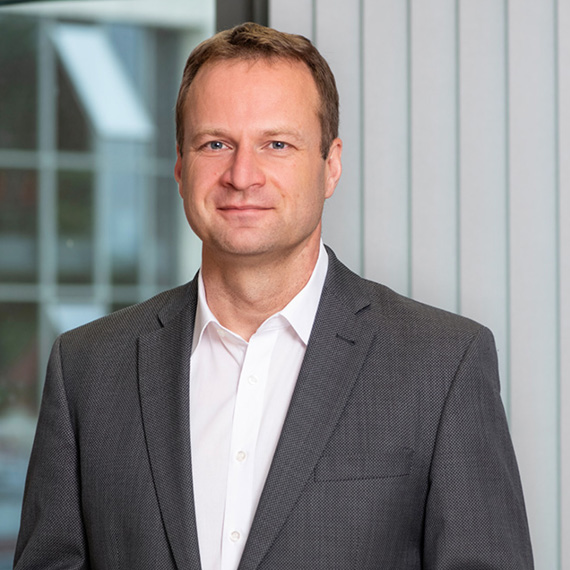
San Francisco, the city of the Golden Gate Bridge, Silicon Valley and this year's PV CellTech 2023, the annual conference for manufacturers of solar cells and modules. As a senior sales manager for MES (Manufacturing Execution Systems) for production control in the photovoltaic (PV) industry, and as an enthusiast for renewable energy, I was very excited about finding out what’s new in the solar sector. That’s because this conference promised insights into the latest developments and challenges in the PV industry. And, if there is an opportunity to come to San Francisco, who can say no to that?
Why PV Celltech Is Not to Be Missed
PV CellTech is the hotspot for PV professionals in the USA. Following introduction of the Inflation Reduction Act (IRA) that is creating the incentives for the PV industry to expand existing manufacturing capacity and attract new companies to the US, the conference was the perfect place to find out how these plans will be implemented over the next few years. As a software provider of MES solutions, we are an important building block in the production chain from raw silicon to wafers, solar cells and modules. That is why it was important for me to learn first-hand about the latest developments and challenges in the industry.
My Conference Highlights
Overall, the conference exceeded my expectations. It was very well organized and offered an entertaining side program with many opportunities to network with established partners in the industry and to get to know new players in the PV world. The presence of innovative companies from Silicon Valley, including start-ups, created an inspiring atmosphere and exciting discussions.
The Key Role of Solar Cell Production
An important takeaway at the conference was the central importance of solar cell production in the solar industry value chain. The focus is on the production of high-quality solar cells, because mastering the technological manufacturing processes is one of the most important components for ensuring the efficiency of the final solar modules. This was consistently identified as a decisive factor for the success and innovative capacity of a PV company. At the same time, this enables independence from solar cell manufacturers from Asia and suggests exciting developments in the future. I am particularly pleased that with our FabEagle®MES, we offer the ideal tool to support these manufacturers in the efficient production of the cells. The goal of some solar module manufacturers already operating in the USA is to enter the solar cell production market in the coming years, but initially with technology and machinery from Asia.
Captivating Presentations and Talks
The presentations by Asian PV manufacturers such as Tongwei Solar, Trina and Longi were particularly informative. They gave an insight into the huge production capacities that already exist and their continued ambitious growth plans. They impressively demonstrated that they are integrated into the value chain from sourcing materials such as raw silicon, glass and aluminum to the final assembly of solar modules and are leaders in technology and plant engineering in all areas.
Conference participants confirmed that these companies are able to produce solar modules at a fraction of the costs of European manufacturers, in part thanks to government funding. While they can sell the Watt/Peak for just under 17 cents, modules manufactured in Europe sometimes cost almost three times as much. These significant price differences illustrate the challenges facing not only the US but also the European solar industry.
In addition to established manufacturers, the focus was also on new technologies and production processes. One example is NexWafe, a company working on an innovative epitaxy process to produce wafers in an energy-efficient and cost-effective way. This technology could help to further reduce production costs while increasing the efficiency of solar cells.
At the conference I had the opportunity to talk to some influential people in the industry. Their outlooks and visions for the future of the photovoltaic industry were extremely exciting and point towards further positive developments, also outside of Asia.

A Look Behind the Scenes: Industry Challenges and Trends
The Dominance of Asian Manufacturers in the Market
At the moment, the market for solar cells is dominated by Asian manufacturers who have built up impressive know-how and production capacities over the years. These companies have developed into true giants that dominate the global photovoltaic industry. In the rest of the world, there are currently only a few, mostly specialized companies that can keep up or are momentarily limited to the production of solar modules.
Challenges for Production and the Labor Market
Another major challenge that was discussed at PV CellTech was the concentration of manufacturers of production machines in China. This covered the entire production chain, from machines for the production of polysilicon to ingots and wafers to cells and, in some cases, even solar modules. There was lively discussion about diversifying manufacturing options and securing supply chains. At the same time, it became clear how difficult it is for the industry to find highly qualified specialists, particularly in view of growing competition from the expanding semiconductor industry.
European and Asian Investments: The Impact of the Inflation Reduction Act (IRA)
The Inflation Reduction Act (IRA) has drastically changed the landscape for the photovoltaic industry in the USA. This law has triggered investments in the USA by European and Asian manufacturers such as Meyer Burger, 3sun, Q-Cells and Trina. These investments are an important step towards market diversification and reducing dependence on Asian suppliers.
The question now is how sustainable these investments are and whether the new players are able to compete with established Asian manufacturers. This concerns not only manufacturing for the local US market, but also the ambitious step of exporting solar modules internationally to increase global market share.
With our product FabEagle®MES, we not only support this goal with advanced solutions to optimize production processes, but also contribute to increasing manufacturers' efficiency and reducing their costs in order to be successful on the global market.
Increasing Efficiency and Reducing Costs: The Future of Solar Cells and Modules
Another trend that was discussed at the conference is the continuous increase in the efficiency of solar cells. The photovoltaic industry is working to convert solar energy into electrical energy more efficiently. This includes research on tandem solar cells, perovskite-based technologies and new materials that can improve the efficiency of solar cells.
In addition to increasing efficiency, potential savings in the individual components of solar modules are also of great importance. An outstanding example is Origami Solar's technology, which replaces the energy-intensive aluminum frame of a module with a lighter steel frame. This innovation not only means that the modules can be more cost effective, but also that the environmental footprint of the manufacturing process can be reduced.
Technological Trends and Challenges
Technological trends in the solar industry were also discussed at PV CellTech 2023. It became clear that conventional silicon-based cell technologies are reaching their efficiency limits. This has led to increased efforts towards the tandem solar cells mentioned above, which, for example, use perovskite to significantly increase output. However, there are still challenges with regard to the durability and long-term efficiency of solar cells using this technology. On a similar timeline to generating power using nuclear fusion, market maturity appears to be a few years away.
The Effect of Economy-Of-Scale: Manufacturers Grow to 3 GW Capacity
Another decisive point for the future of the photovoltaic industry is the growth of manufacturers to a minimum production capacity of 3 GW. This is crucial in order to take advantage of the economy-of-scale cost advantages and to be able to produce solar cells and modules competitively. Production capacities above 3 GW do not provide manufacturers with any significant price advantages in production.
Impressions Away From the Conference: Business Meetings and a Spectacular Return Flight
In addition to attending the conference, I also had the opportunity to meet business partners outside PV and to present our FabEagle® products for electronics manufacturing. These discussions opened up exciting opportunities for future projects and collaborations.
The return flight from San Francisco to Munich brought an unexpected surprise. Before take-off, the pilot explained to us that we could not set course directly for Germany as usual today. Instead, we had to fly an extra loop towards the Pacific to keep clear of the air show over Alcatraz. This unexpected detour gave us a breathtaking view of the Golden Gate Bridge, Alcatraz and the spectacular air show.

Attending PV Cell Tech 2023 in San Francisco was very informative and well worth the long journey. The conference highlighted the most important challenges and opportunities in the solar industry and is a decisive guide for us in developing our products for the photovoltaic industry.
The importance of solar cell production and optimizing its efficiency became clear during the many presentations and face-to-face discussions. Ongoing dependence on China for key components was also discussed. Nevertheless, technological trends, particularly in the area of tandem solar cells, are promising and will lead to major steps in improving the efficiency of solar modules.
Overall, the conference was an important opportunity to talk to well-known as well as new players in the PV sector and obtain information on current developments. It will be exciting to see how the solar industry is going to overcome the challenges ahead of it.

